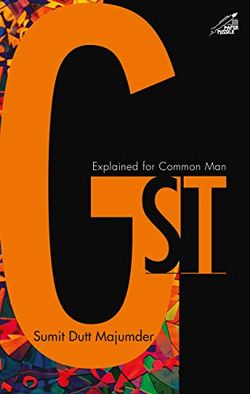The new indirect tax system, GST, which is just over a year old, still foxes many an expert. Innumerable WhatsApp jokes had done the rounds in the last one year, espousing the various complexities of GST. But then, GST - Explained for Common Man by former Central Board of Excise and Customs chairman Sumit Dutt Majumder, was not yet published a year back.
Recalling Majumder's contribution in the rollout of the indirect tax system, former president and finance minister Pranab Mukherjee thanked him for explaining why a constitutional amendment bill needs to be moved and the centre-state dual structure of GST. Launching Majumder's book on Friday, Mukherjee said that GST in India has been 'broadly successful' as the GST has made the country a 'truly common economic market'. Mukherjee, however, also highlighted the pains of MSME sector, who he said did not have a good experience with GST.
This new book, or rather very purposeful handbook, is authored by India's former CBEC chairman, who remained active in ushering of the GST process. Sumit Dutt Majumder has done justice to the subject in this book, capturing the essence of a maze of laws, bye-laws and amendments into just 458 pages and 32 chapters.
The volume is first of its kind which explains GST, the concepts of dual GST and how it came about. Also, the working of the GST Council and many other tax topics have been presented in a lucid readable form. The short pieces would espouse greater understanding for any student of the new indirect tax system. Millions of GST professionals can be greatly benefit with his book.
The several business processes under GST, from registration to return filing, have been lucidly described by the author. Majumder's mastery over the subject is evident from the simplicity in his explanation of these processes in this book. The book also provides a glimpse into the best indirect tax practices followed across the world. More importantly, it clearly draws out the line between what is and what is not taxable under GST.
Interestingly, for those looking for answers to sector-specific GST queries, the author has devoted a special FAQ section which deals into the issues specific to a number of sectors. Taking note of the various appeal processes in GST is also important. Dutt Majumder has done this by presenting insights from a treasure trove of appeals and revisions and advance rulings available to him of various cases.
All in all, this book is greatly recommended for the bookshelf of any financial professional having to deal with GST for both academic pursuits or for work-related reasons.



